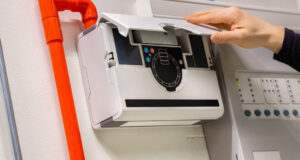Very Early Smoke Detection Apparatus : Revolutionizing MEP Construction and Engineering

In contemporary building architecture and safety systems, fire detection is an important feature for the protection of lives and property. The Very Early Smoke Detection Apparatus (VESDA) is one of the most sophisticated technologies used in this regard. Such systems are programmed to identify smoke in its initial phases, usually prior to visibility, to provide quick response and reduce likely damage. VESDA systems are being more commonly incorporated into MEP construction and MEP services to maximize general building security.
Knowing VESDA in MEP Services
VESDA systems (Very Early Smoke Detection) work by constantly sucking air out of a building from multiple points through a network of pipes into a detection device. Contrasting with traditional smoke detectors, which only signal an alarm when smoke reaches a concentration at a point, VESDA senses ultra-fine particles of smoke in their earliest state.
VESDA is very applicable to MEP design, as it must be intentionally located within building systems. VESDA integration planning in MEP civil engineering minimizes disruption of structural elements and maximizes coverage around sensitive areas like server rooms, data centers, laboratories, and high-risk industrial facilities.
Importance of VESDA in MEP Construction
In MEP building construction, fire systems are not an afterthought—but a part of the building’s design and operation. VESDA offers a number of benefits:
Early Detection : Identifies smoke at a very early stage, enabling early firefighting and evacuation.
Continuous Monitoring : Operates 24/7 to provide continuous air sampling, enhancing reliability in high-risk zones.
Integration with MEP Systems : Can be easily integrated with HVAC systems, electrical boards, and fire suppression units, which is the central theme of MEP in engineering.
Lower False Alarms : Sophisticated filtration and sensitivity controls reduce false alarms, which is imperative in facilities with unbroken operations.
How VESDA Complements Mechanical, Electrical & Plumbing Systems
Very Early Smoke Detection(VESDA) system integration demands teamwork between mechanical, electrical, and plumbing engineers:
Mechanical : Providing airflow from ducting systems to the smoke detection units without compromising HVAC efficiency.
Electrical : Ensuring stable power supplies and combining alarms and notification panels.
Plumbing : Creating conduit and pipe routes that don’t disrupt water and sewage systems while serving detection piping.
Including Very Early Smoke Detection (VESDA) in MEP civil engineering allows architects and engineers to provide life safety systems that are both efficient and adhere to global fire safety standards.
Applications of VESDA in Contemporary MEP Engineering
Very Early Smoke Detection (VESDA) systems are no longer exclusive to high-rise buildings; they are fast becoming the norm in industries where early detection of smoke is paramount:
Commercial Complexes : Offices, shopping centers, and hotels.
Industrial Sites : Manufacturing plants, warehouses, and chemical facilities.
Data Centers : Safeguarding invaluable IT infrastructure.
Healthcare Facilities : Hospitals and laboratories where lives can be saved by early smoke detection.
Conclusion
The Very Early Smoke Detection Apparatus (VESDA) is a step ahead of traditional fire safety, especially in MEP construction and MEP services. With the installation of VESDA in mechanical, electrical & plumbing systems, engineers are able to deliver structures that are not only structurally strong but also very safe. In MEP civil engineering, the implementation of such advanced systems guarantees active risk management, enhanced safety, and adherence to contemporary engineering practices.
Including VESDA in your building’s design is no longer a nicety—it is a necessary part of smart, robust, and secure MEP engineering.


